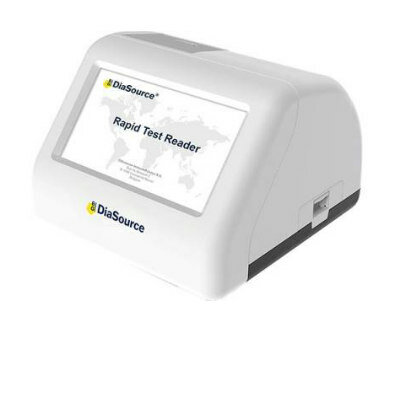New Drug Found to Induce Therapeutic Reactivation Flare in Chronic Hepatitis B
By LabMedica International staff writers
Posted on 21 Nov 2013
A biopharmaceutical company developing targeted RNAi therapeutics presented new encouraging data on ARC-520, its clinical drug candidate for the treatment of chronic hepatitis B virus (HBV), at the 2013 American Association for the Study of Liver Diseases (AASLD) annual meeting, held November 1–5, 2013, in Washington DC (USA).Posted on 21 Nov 2013
The data demonstrate that intravenous (IV) administration of two doses (2 mg/kg, 3 mg/kg) of ARC-520 in a chimpanzee chronically infected with HBV resulted in substantial and sustained reductions in HBV DNA, HBeAg, and HBsAg, which did not return to baseline until study day 43, 43, and 71, respectively. Furthermore, an increase in serum alanine transaminase (ALT) occurred four weeks after the last dose, coinciding with the nadir of circulating HBsAg.
This is suggestive of a therapeutic immunologic flare, which is thought to be part of a cascade that under chronic therapy may lead to HBsAg seroconversion and a functional cure. Robert E. Lanford, PhD, from the Texas Biomedical Research Institute (San Antonio, USA; http://txbiomed.org) where the study was conducted, presented these data at the meeting. “This is an important addition to our data set and a milestone for the development plan of ARC-520. This study would have been important if ARC-520 just demonstrated safe and effective HBsAg reduction because this is thought to be a necessary step in achieving a functional cure,” said Dr. Lanford. “What is really exciting about these data, however, is that we appear to have seen immune de-repression, the next step toward HBsAg seroconversion and functional cure. The timing of the ALT rise and associated increases in key chemokine/cytokine mRNAs suggest that they were related to the therapy-induced reduction in circulating HBsAg and represented an immunological event.”
The study was a proof-of-concept antiviral effectiveness trial for ARC-520, which is composed of two cholesterol-conjugated siRNAs and the hepatocyte-targeted membrane-lytic dynamic polyconjugate (DPC) delivery vehicle. It was conducted in a single chimpanzee chronically infected with HBV since 1979 (chimpanzee 4x0139; genotype B; viral load ~1.3x1010 GE/mL; HBsAg 824 μg/mL). Activity was tracked using serum levels of HBV DNA, HBeAg, and HBsAg.
Arrowhead Research Corp. (Pasadena, CA, USA), the developer of the new agent, reported early findings through day 29 of this study. HBV DNA levels dropped by 17-fold by day 4, exhibited a 36-fold decrease following the second dose, and returned to baseline by day 43. HBeAg levels dropped by more than one log by day 4 and returned to baseline by day 43. HBsAg levels declined gradually reaching a 5.2-fold reduction on day 29 and did not return to baseline until day 71. HBsAg is a serum lipoprotein complex and has a significant half-life in circulation, thus declines for this marker were more gradual but also more sustained. An increase in ALT was evidenced near the HBsAg nadir.
“This is an important addition to our data set and a milestone for the development plan of ARC-520,” said Christopher Anzalone, PhD, Arrowhead’s president and CEO. “We successfully completed enrollment in a phase 1 clinical study in healthy volunteers with initial data indicating that ARC-520 is generally safe and well tolerated in humans. We will be filing with Hong Kong regulatory authorities this quarter to enable a phase 2a study in patients with chronic HBV infection.”
The data presented indicate that treatment with ARC-520 in combination with entecavir appears to be additive and possibly synergistic. These results support plans to initiate a phase 2a study of ARC-520 in combination with entecavir, pending regulatory approval.
Arrowhead’s RNAi-based candidate ARC-520 is designed to treat chronic HBV infection by reducing the expression and release of new viral particles and key viral proteins. The objective is to achieve a functional cure, which is an immune clearant state characterized by hepatitis B s-antigen negative serum with or without seroconversion.
The siRNAs in ARC-520 intervene at the mRNA level, upstream of where nucleotide and nucleoside analogues act. In transient and transgenic mouse models of HBV infection, a single co-injection of Arrowhead’s DPC delivery vehicle with cholesterol-conjugated siRNA targeting HBV sequences resulted in multi-log knockdown of HBV RNA, proteins, and viral DNA with long duration of effect. In a chimpanzee chronically infected with HBV and high viremia and antigenemia, ARC-520 triggered rapid and deep reductions in HBV DNA, e-antigen, and s-antigen. Arrowhead has completed enrollment in a phase 1 single ascending dose study in normal volunteers, which the company expects to follow with a phase 2a study in chronic HBV patients.
Related Links:
Texas Biomedical Research Institute
Arrowhead Research














